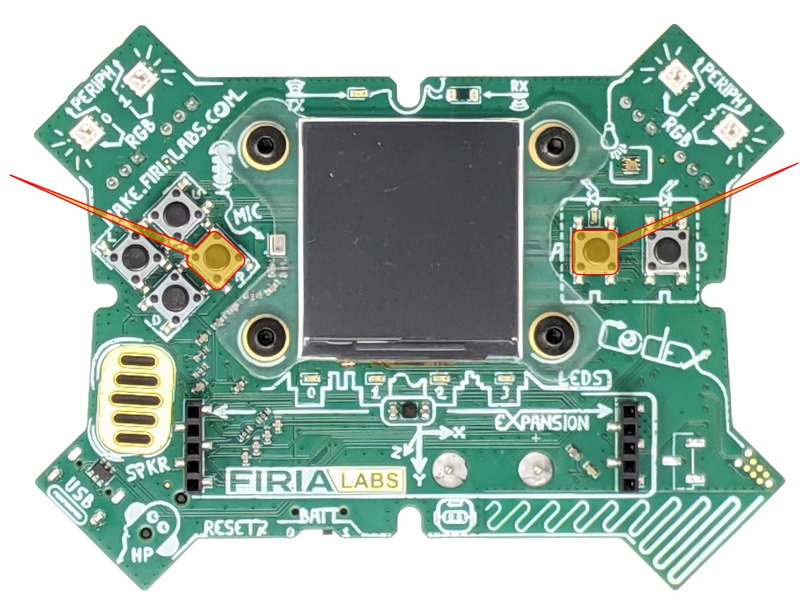Troubleshooting Guide¶
If you’re experiencing problems with your CodeX, don’t panic! Following the steps below will resolve most common issues.
Reboot and Reload¶
If CodeX doesn’t seem to be responding to CodeSpace, try the following sequence:
Unplug the USB cable.
Click Chrome’s Reload button.
Plug the USB cable back in.
Test CodeX with a simple “known good” Python program - hopefully you’re back in business!
Reformat CodeX’s Filesystem¶
Your Python code is written to files on CodeX’s CircuitPython file-system.
It is possible to write code that disables the USB connection immediately at bootup, which makes it difficult to recover using CodeSpace!
If power is lost while writing to files they can become corrupted, so you need a way to wipe the slate clean…

To re-format the file system:
Press and hold buttons A and R and keep holding them down…
Briefly press the RESET button next to the BATT switch.
Keep holding buttons A and R until you see the red LEDs light up from 3 to 0 in left-to-right order.
You will see a double-flash of ALL red LEDs to confirm the filesystem has begun to reformat. You can release the buttons, and it will boot up in a few seconds with a clean filesystem!
Firmware Update¶
CodeX’s firmware is the Operating System code that includes the Python language, debugger, and all the low-level APIs you use to access the hardware. Doing a firmware update takes less than a minute, and it completely replaces the contents of the onboard FLASH memory with factory-fresh code.
Note: Under normal circumstances, CodeSpace will prompt you when there’s a newer version of firmware available for CodeX. Every time you connect it, CodeSpace confirms it’s running the latest version.